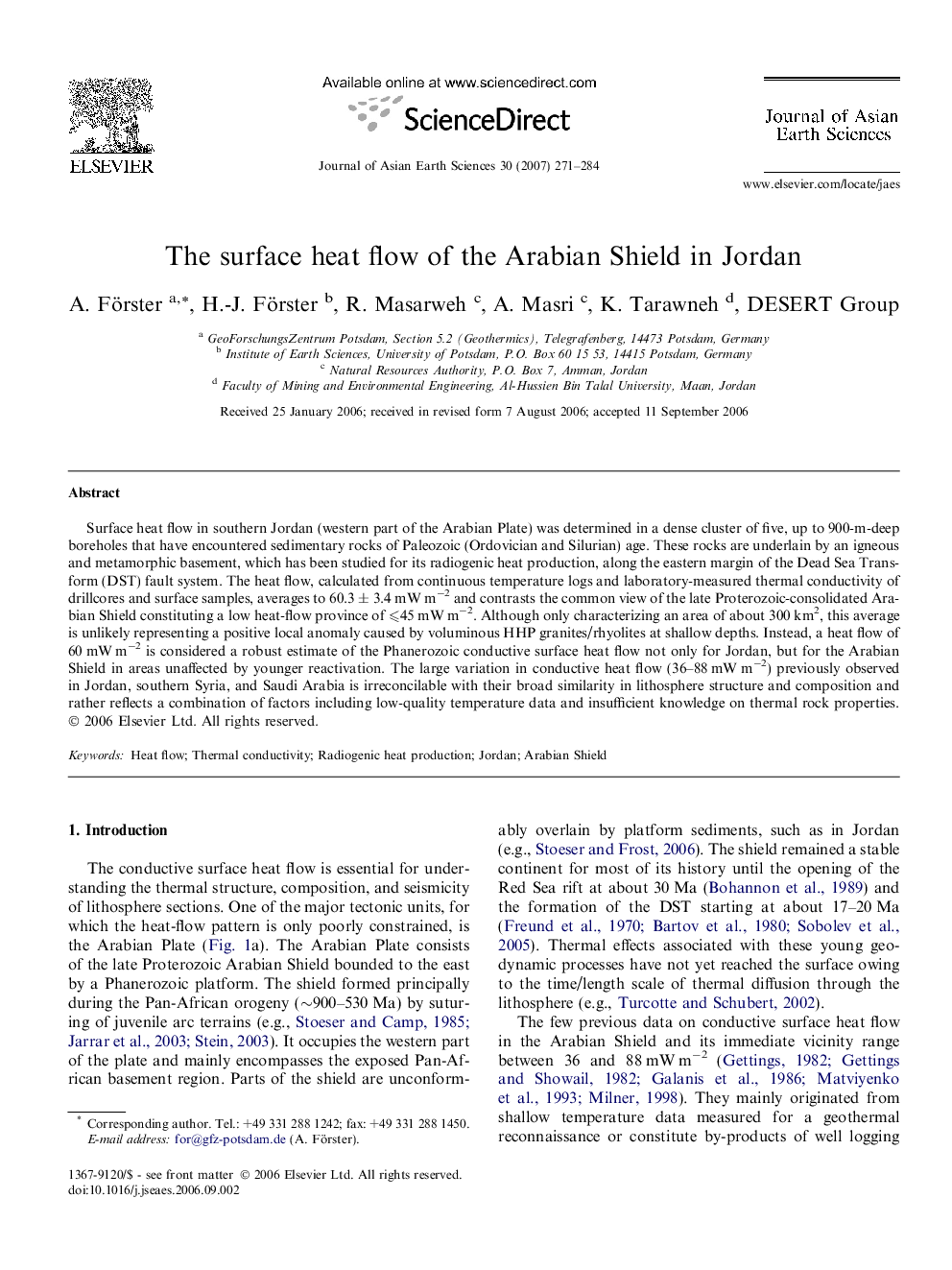| کد مقاله | کد نشریه | سال انتشار | مقاله انگلیسی | نسخه تمام متن |
|---|---|---|---|---|
| 4732292 | 1356855 | 2007 | 14 صفحه PDF | دانلود رایگان |

Surface heat flow in southern Jordan (western part of the Arabian Plate) was determined in a dense cluster of five, up to 900-m-deep boreholes that have encountered sedimentary rocks of Paleozoic (Ordovician and Silurian) age. These rocks are underlain by an igneous and metamorphic basement, which has been studied for its radiogenic heat production, along the eastern margin of the Dead Sea Transform (DST) fault system. The heat flow, calculated from continuous temperature logs and laboratory-measured thermal conductivity of drillcores and surface samples, averages to 60.3 ± 3.4 mW m−2 and contrasts the common view of the late Proterozoic-consolidated Arabian Shield constituting a low heat-flow province of ⩽45 mW m−2. Although only characterizing an area of about 300 km2, this average is unlikely representing a positive local anomaly caused by voluminous HHP granites/rhyolites at shallow depths. Instead, a heat flow of 60 mW m−2 is considered a robust estimate of the Phanerozoic conductive surface heat flow not only for Jordan, but for the Arabian Shield in areas unaffected by younger reactivation. The large variation in conductive heat flow (36–88 mW m−2) previously observed in Jordan, southern Syria, and Saudi Arabia is irreconcilable with their broad similarity in lithosphere structure and composition and rather reflects a combination of factors including low-quality temperature data and insufficient knowledge on thermal rock properties.
Journal: Journal of Asian Earth Sciences - Volume 30, Issue 2, 20 April 2007, Pages 271–284